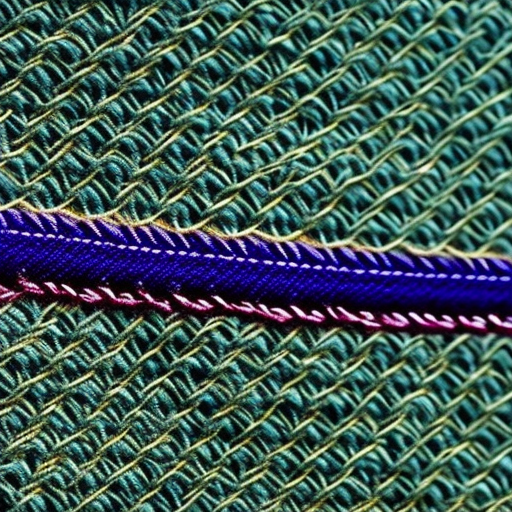Sewing stitches play a vital role in creating beautiful and functional garments and accessories. Among the various types of stitches used in sewing, one that deserves special attention is the whip stitch. This versatile stitch is widely used in both hand sewing and machine sewing for various purposes. In this article, we will explore the whip stitch in detail and learn about its applications and techniques.
What is a Whip Stitch?
The whip stitch is a simple and strong stitch used primarily for joining fabric edges together. It is commonly employed in sewing seams, hemming, appliqué, and attaching trims or embellishments. The whip stitch creates a neat and secure bond between fabric layers, preventing fraying and ensuring durability. Additionally, this stitch is practically invisible on the right side of the fabric, making it a popular choice for seamless finishes.
How to Whip Stitch
Whip stitching is a straightforward process that can be easily mastered with practice. Here’s a step-by-step guide to performing a basic whip stitch:
- Position the fabric edges you wish to join so that they align perfectly.
- Thread your needle with a suitable thread, preferably of a matching color.
- Beginning at one end, insert the needle from the backside of the fabric, bringing it through the fabric layers.
- Hold the thread tail behind the fabric to secure it.
- Move the needle diagonally across the fabric to the opposite side, creating a diagonal stitch that catches a small amount of fabric from each edge.
- Repeat the diagonal stitch motion, ensuring the stitches are evenly spaced and of the desired length.
- Continue whip stitching until you reach the end, then secure the thread by creating a small knot on the backside of the fabric.
Applications of Whip Stitch
The whip stitch finds numerous applications in the sewing world. Some common uses include:
- Seaming: Whip stitching is an effective method for joining fabric pieces together, particularly for lightweight fabrics or edges that require flexibility.
- Hemming: This stitch is often utilized to hem garments, providing a tidy finish.
- Appliqué: Whip stitching is valuable for attaching decorative fabric pieces or patches to a base fabric.
- Trims and Embellishments: The whip stitch is frequently employed to affix trims like lace, ribbons, or beads to fabric surfaces.
Given its simplicity and versatility, the whip stitch is an essential technique for any sewing enthusiast. Mastering this stitch can greatly enhance your sewing skills, allowing you to create professional-looking projects with ease. Whether you are a beginner or a seasoned sewist, the whip stitch is a technique worth incorporating into your repertoire.
So, whether you need to sew seams, hem garments, or add decorative elements, consider using the whip stitch for a seamless, durable, and visually pleasing outcome. Happy stitching!




